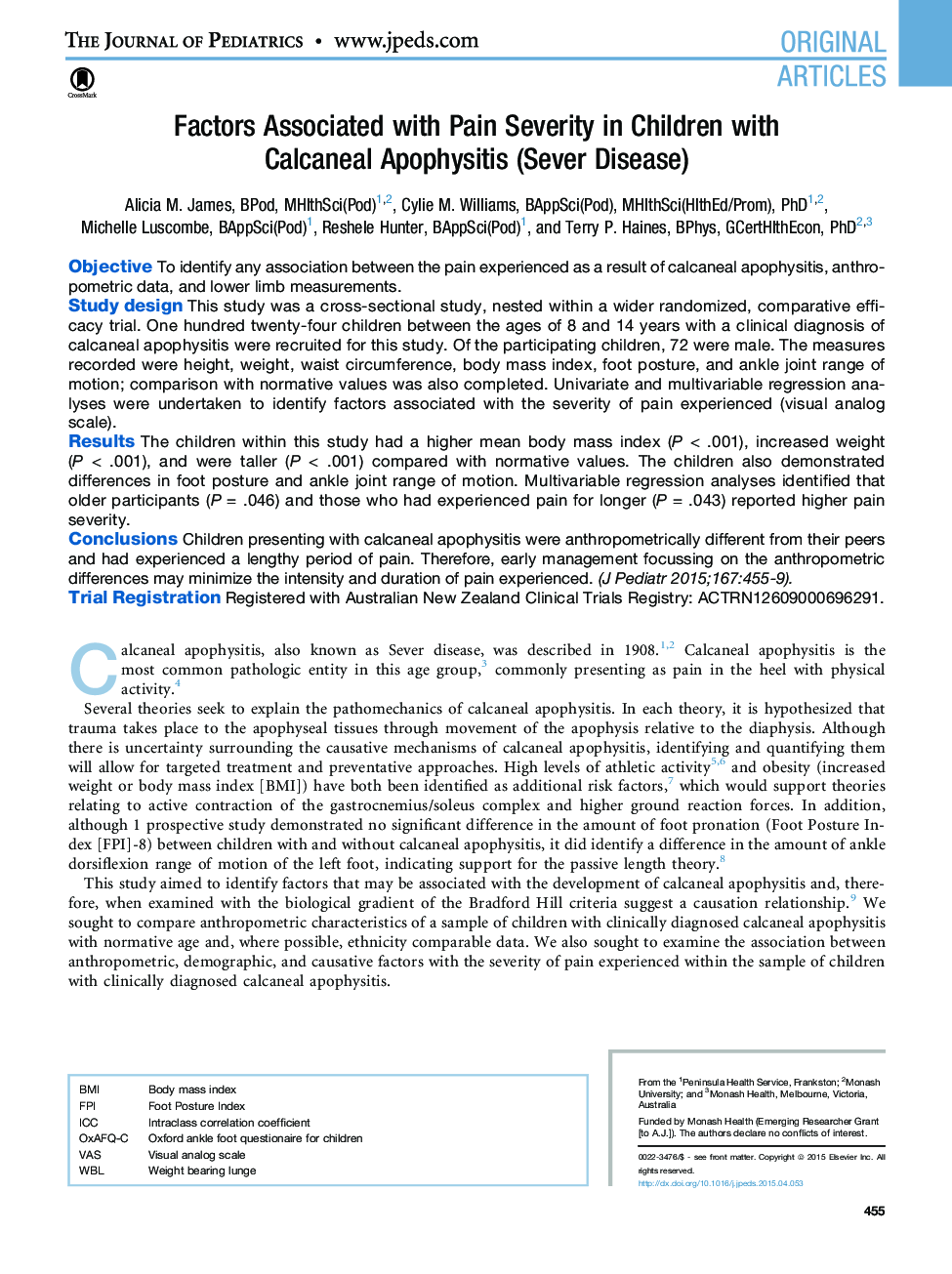| Article ID | Journal | Published Year | Pages | File Type |
|---|---|---|---|---|
| 6220531 | The Journal of Pediatrics | 2015 | 5 Pages |
ObjectiveTo identify any association between the pain experienced as a result of calcaneal apophysitis, anthropometric data, and lower limb measurements.Study designThis study was a cross-sectional study, nested within a wider randomized, comparative efficacy trial. One hundred twenty-four children between the ages of 8 and 14Â years with a clinical diagnosis of calcaneal apophysitis were recruited for this study. Of the participating children, 72 were male. The measures recorded were height, weight, waist circumference, body mass index, foot posture, and ankle joint range of motion; comparison with normative values was also completed. Univariate and multivariable regression analyses were undertaken to identify factors associated with the severity of pain experienced (visual analog scale).ResultsThe children within this study had a higher mean body mass index (PÂ <Â .001), increased weight (PÂ <Â .001), and were taller (PÂ <Â .001) compared with normative values. The children also demonstrated differences in foot posture and ankle joint range of motion. Multivariable regression analyses identified that older participants (PÂ =Â .046) and those who had experienced pain for longer (PÂ =Â .043) reported higher pain severity.ConclusionsChildren presenting with calcaneal apophysitis were anthropometrically different from their peers and had experienced a lengthy period of pain. Therefore, early management focussing on the anthropometric differences may minimize the intensity and duration of pain experienced.Trial RegistrationRegistered with Australian New Zealand Clinical Trials Registry: ACTRN12609000696291.
